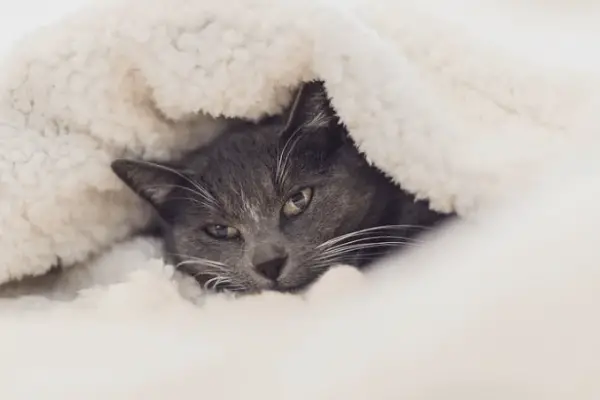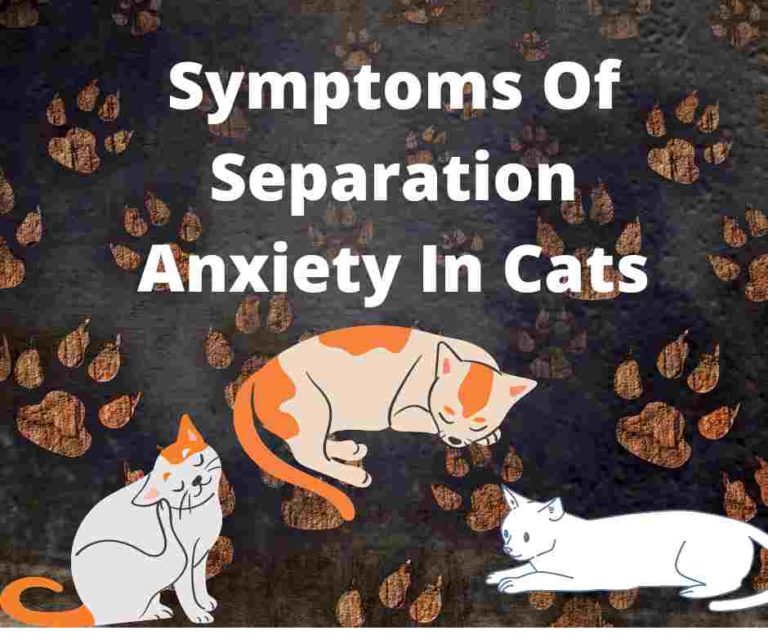Diabetes in Cats Explained In Simple Terms
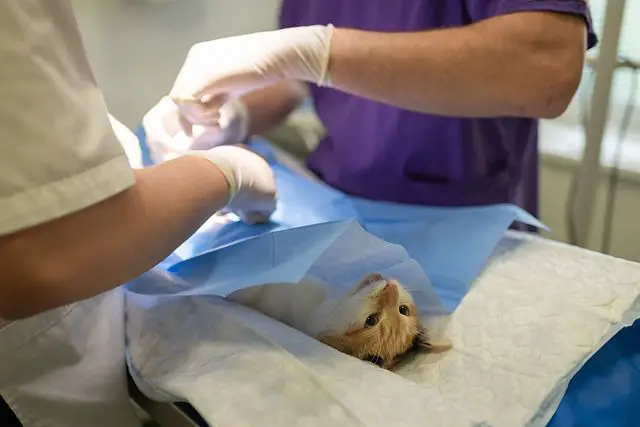
Diabetes in cats is a major risk factor for most cat owners and if not properly handled could lead to the death of the cat.
In this short blog post, we will quickly go through the symptoms, causes, and care of diabetes in cats.
Diabetes in cats
Diabetes mellitus is a condition in which the body of the cat cannot properly produce or respond to the hormone insulin, resulting in elevated levels of glucose in the blood, which is the main source of energy for the body.
Cats can also develop diabetes, and the four main symptoms are increased thirst, increased urination, weight loss, and increased appetite.
Diabetes in cats is caused by an insulin deficiency, and certain medical conditions or treatments may also predispose a cat to develop diabetes.
If left untreated, diabetes mellitus can progress to a stage of the disease that is life-threatening for cats.
Recommended article: Cat stomach problems symptoms.
Causes Diabetes In Cats
Diabetes in cats is a complex disease and will often begin as a mild manifestation of an autoimmune disease.
While there are many potential causes of diabetes in cats, here are some common contributing factors:
- Genetics: Some breeds of cats, such as Siamese and Burmese, may have a higher risk of developing diabetes.
- Obesity: Overweight cats are at a higher risk of developing diabetes, as excess body fat can cause insulin resistance.
- Diet: A diet high in carbohydrates and low in protein can contribute to the development of diabetes in cats.
- Inactivity: Physical inactivity can make cats more prone to obesity and diabetes.
- Pancreatitis: Inflammation of the pancreas can damage the insulin-producing cells and lead to the development of diabetes.
- Hormonal disorders: Hormonal disorders such as hyperthyroidism and Cushing’s disease can increase the risk of diabetes in cats.
- Age: Older cats are at a higher risk of developing diabetes than younger cats.
- Medications: Medications such as corticosteroids can increase the risk of diabetes in cats.
- Stress: Stress can cause insulin resistance in cats, leading to a higher risk of diabetes.
Recommended article: how do cats get bacterial infections?
Symptoms of Diabetes in Cats
Here are some common symptoms of diabetes in cats you should know:
- Increased thirst – Diabetic cats tend to drink more water than usual due to their kidneys working harder to filter out the excess glucose.
- Frequent urination – Cats with diabetes may need to use the litter box more often or have accidents outside of the box.
- Increased appetite – Diabetic cats may constantly feel hungry due to their bodies not being able to properly utilize glucose.
- Weight loss – Despite the increased appetite, diabetic cats may lose weight since their bodies are not processing nutrients correctly.
- Lethargy – Diabetic cats may have less energy and be less active than usual.
- Vomiting – High levels of glucose in the blood can cause gastrointestinal upset and vomiting.
- Dehydration – Increased thirst and frequent urination can lead to dehydration in diabetic cats.
- Poor coat quality – Diabetic cats may develop a dull or greasy coat due to poor grooming and skin infections.
- Susceptibility to infections – Diabetic cats are more susceptible to infections such as urinary tract infections or skin infections.
Caring for Cats With Diabetes
Here are some common ways of caring for cats with diabetes:
- Stick to a regular feeding schedule: This helps regulate your cat’s blood sugar levels.
- Feed your cat a low-carbohydrate, high-protein diet: A diet that is high in protein and low in carbohydrates can help keep your cat’s blood sugar levels stable. Consult with your veterinarian for more information.
- Monitor your cat’s blood sugar levels: Your veterinarian may recommend that you monitor your cat’s blood sugar levels at home using a glucose meter.
- Administer insulin injections: If your cat has been diagnosed with type 1 diabetes, he or she will need regular injections of insulin to regulate blood sugar levels.
- Check your cat’s urine for signs of ketones: High levels of ketones in the urine can indicate that your cat’s diabetes is poorly controlled.
- Keep your cat active: Daily exercise can help your cat maintain a healthy weight, which is important for managing diabetes.
- Regular vet check-ups: Regular check-ups with your veterinarian can help catch any complications early and prevent more severe health problems from developing.
- Watch for changes in behavior: If your cat’s behavior changes suddenly, it could be a sign of complications related to diabetes, such as hypoglycemia (low blood sugar).
- Be patient and consistent: Caring for a cat with diabetes can be challenging, but with patience and consistency, you can manage the disease and help your cat live a happy, healthy life.
Treating Diabetes in Cats
The mainstay of diabetes treatment in cats is insulin therapy, which requires owners to administer insulin injections, usually twice a day, roughly 12 hours apart at the same time each day.
Diabetes can be managed successfully with proper treatment, diet, and exercise, and although it cannot be completely cured, cats can live happy, normal life.
With early, aggressive treatment, the prognosis for a good quality of life is good.
Diabetes in cats can also be treated with the following medications:
- Insulin therapy
- Oral medications
- Oral antidiabetic drugs
- Ketogenic diets
- Medical visits
- Fluids
- Antibiotics
Preventing Diabetes in Cats
Here are some common ways to prevent diabetes in cats:
- Diet control: Feed your cat a diet that is low in carbohydrates and high in protein to help regulate blood sugar levels.
- Exercise: Regular exercise can help keep your cat fit and prevent obesity, a major risk factor for developing diabetes.
- Weight management: Monitor your cat’s weight and try to keep them at a healthy weight to help prevent the onset of diabetes.
- Regular checkups: Take your cat for regular checkups to catch any potential health problems early, including diabetes.
- Reduce stress: Stress can have an impact on your cat’s overall health, so try to reduce stressors in your cat’s daily life.
- Monitor water intake: Keep an eye on how much water your cat is drinking, as excessive thirst can be a sign of diabetes.
- Avoid feeding human food: Avoid feeding your cat human food as it can lead to obesity and other health problems.
- Genetics: Be aware of your cat’s breed and any predilections for developing diabetes in specific breeds.
Few Questions about Diabetes In Cats
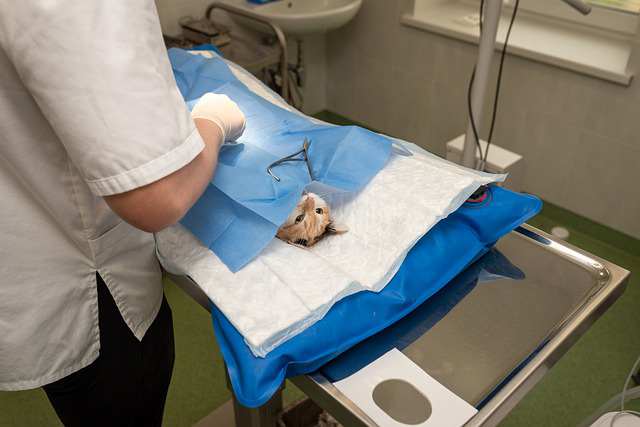
Here are some frequently asked questions about diabetes in cats and the answers:
Is a cat with diabetes in pain?
Yes, a cat with diabetes is in strong pain because there is neuropathic pain in the hind legs and this makes the cat uncomfortable at all times.
What happens to a cat with untreated diabetes?
Untreated diabetes in cats leads to increasingly weak legs in cats, eventually malnutrition, ketoacidosis, and death.
It is important to note that early diagnosis and treatment by a qualified veterinarian can not only help prevent nerve damage.
However, in some cases, this can even lead to remission so that the cat no longer needs to be injected insulin.
How do you treat a diabetic cat without insulin?
A natural way of treating a diabetic cat without insulin is to place the cat on a low-carb food and allow things to work themselves out.
Learn more about cat health problems.
How many times a day do you feed a diabetic cat?
A diabetic cat should be fed 2 times a day with very low carbohydrate food to help lower and stabilize the blood sugar levels.
Be careful what you feed a diabetic cat always make sure you contact your vet before changing food.
How long does it take to stabilize a diabetic cat?
On average, it takes 3-6 months to stabilize a diabetic cat if you stick to the instructions of your veterinarian.
This may vary according to the severity of diabetes in the cat, as there is individual cat variation in the response to insulin.
How does a vet test a cat for diabetes?
To perform a diabetic test on a cat, the veterinarian will have to perform blood tests and a urinalysis.
The blood will show an elevated glucose level and the urine will have glucose in it.
What are the side effects of insulin in cats?
Too much insulin in cats may have the following effects:
- Muscle twitching
- Hunger
- Hypoglycemia
- Restlessness
What are the symptoms of too much insulin in cats?
Here are the symptoms of too much insulin in a cat and you need to contact your vet immediately:
- Persistent Jerking
- Lethargy
- Bumbling behavior
- Persistent Weakness
- Changes to eating habits
- Twitching
Conclusion
In conclusion, diabetes in cats is a serious condition that requires careful attention and management.
By working closely with your veterinarian, monitoring your cat’s diet and exercise, and administering insulin as needed, you can help your furry friend live a long and healthy life.
Remember to always be on the lookout for symptoms of diabetes, such as increased thirst and urination, and to seek veterinary care promptly if you suspect your cat may be affected.

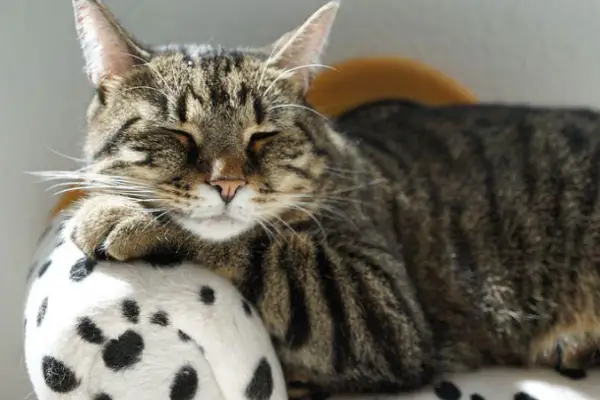
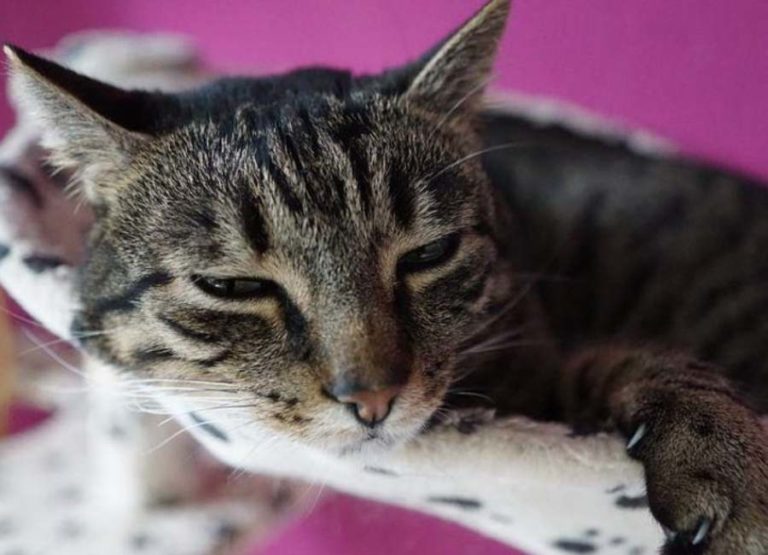
![How Do Cats Get Bacterial Infections [12 Hints] How Do Cats Get Bacterial Infections](https://petcreeks.com/wp-content/uploads/2021/03/How-Do-Cats-Get-Bacterial-Infections.jpg)
